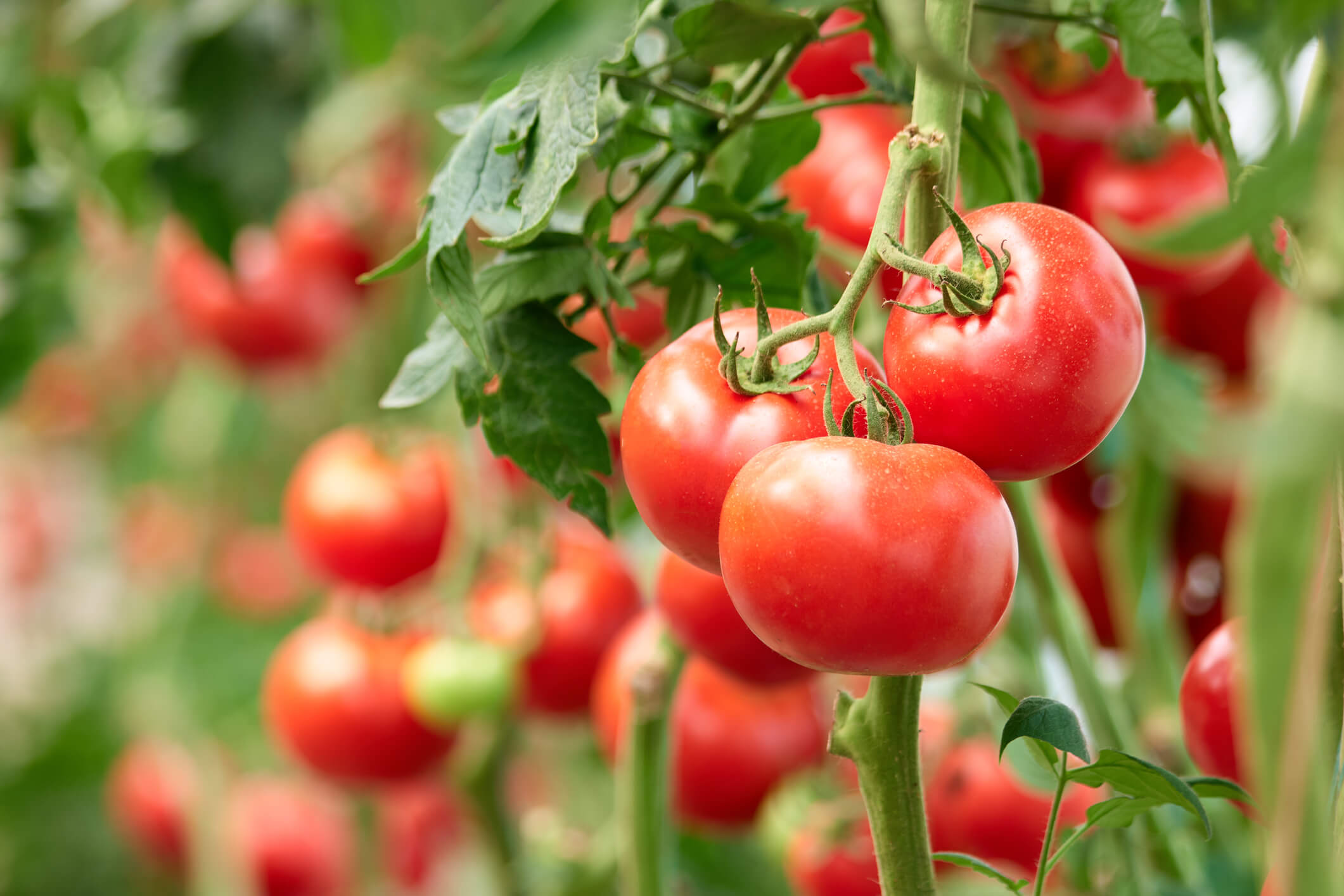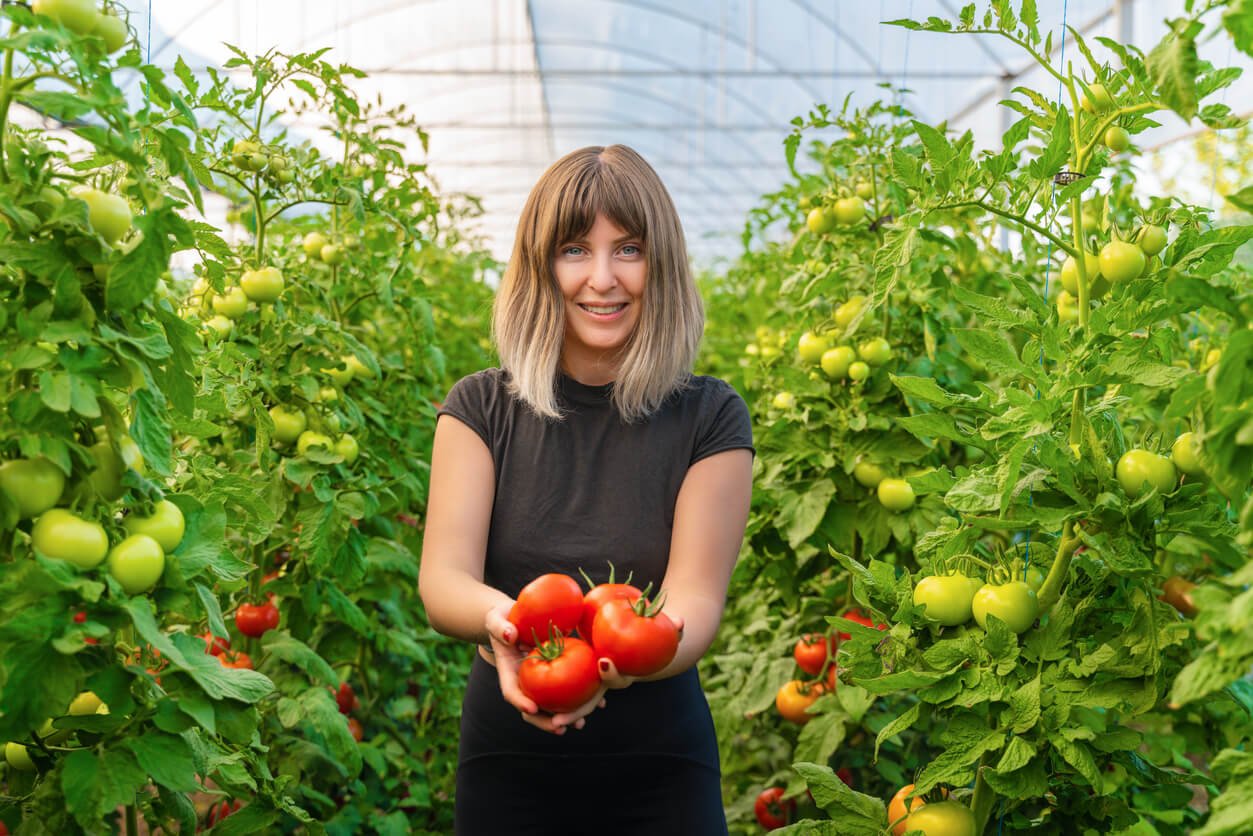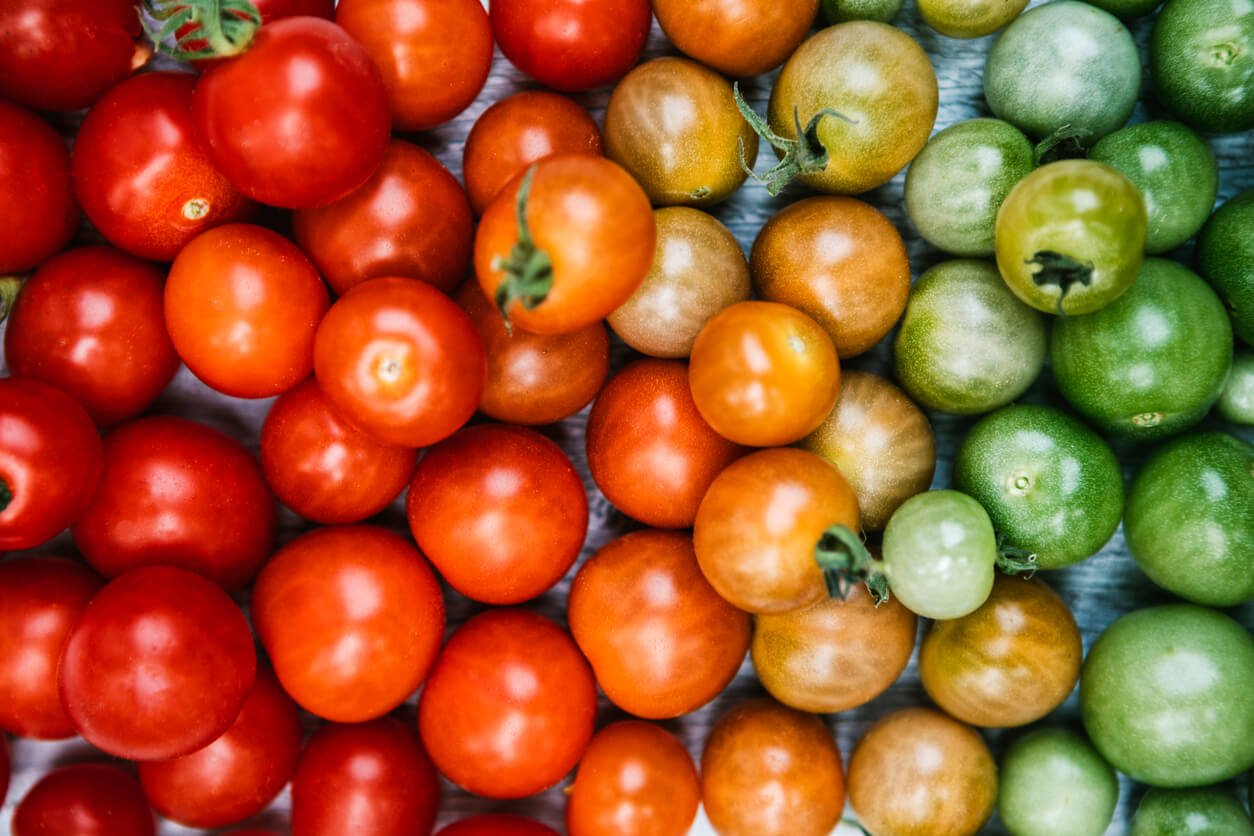It’s a common misconception that nightshades are “bad” for you. While some people do have sensitivities and allergies to them, a peer-reviewed summary in the Mediators of Inflammation Journal reveals that consuming tomatoes on a consistent basis is associated with a lower risk of chronic non-communicable diseases and several different cancers. Despite the health benefits, not all tomatoes are created equal. Some are more nutrient-dense than others. And they vary widely in flavor from super sweet to acidic, and in texture from juicy to meaty. Read on to learn about why you might want to grow your own tomatoes and how to do so successfully.
Three Reasons to Grow Your Own Tomatoes
1. Flavor
There’s nothing like the flavor of sun-kissed, vine-ripe tomatoes! When you grow your own tomatoes, you’ll soon realize that what you get from the grocery store may be labeled tomatoes, but taste like water in comparison. Tomatoes should taste sweet, tart, tangy, or a balance between these flavors. Try growing some yourself to see just how drastically different homegrown tomatoes are from the alternative.
2. Nutrients
By growing your own tomatoes, you’ll know that they are packed with nutrients like vitamins A, C, and K along with potassium. Growing your own puts the quality back into your hands, so you know you and your loved ones are getting the most vitality from your food. Plus, eating fresh-picked food can drastically reduce the nutrient loss from plant to plate involved in early harvesting and transportation of commercial tomatoes.
3. Variety
You can choose from over 10,000 tomato varieties! Do you like your tomatoes sweet, mild, acidic, fruity, rich, or even smoky? Do you like them big, or small? Mellow or intense? Do you like them red, purple, blue, yellow, or pink? When you grow your own, you have many more options to delight your taste buds than the choices available to you at the store!
How To Grow Nutrient-Dense Tomatoes
When inviting plants into your life, it’s important to remember that plants want to thrive. They do whatever it takes to grow strong and turn into seeds for the next generation of plants. Your role as a steward is to provide the best conditions for your plants to flourish. Here are the eight considerations when growing tomatoes.
1. Choose a Tomato That’s Right for You
People often choose their tomato plants based on the most enticing photos in the seed catalog. Choosing this way can severely backfire and result in a flavor that isn’t to your liking, or a poor harvest if you choose seeds or seedlings that don’t tend to thrive in your growing environment. Instead, use a planting calendar (or check the back of seed packets) to determine what varieties you can plant and when based on your hardiness zone.
You’ll also want to think about how you want to enjoy your tomatoes. Do you crave juicy beefsteaks layered on sandwiches and veggie burgers? Or maybe you like tidier and super tasty salad tomatoes that are also great for slicing. If you’re a snacking sort, cherry or grape tomatoes might be your go-to’s. Then again, if you like to have tomatoes on hand year-round — for example, in sauces or as dried tomatoes — then romas might be on your list. And, if you’re like a lot of people who enjoy tomatoes, you’ll decide that you want to grow more than one type!
2. Determinate or Indeterminate Varieties
Once you have an idea of the varieties you want to grow, you’ll want to decide which of the two basic tomato plant types you’ll cultivate: determinate or indeterminate.
Determinate tomatoes grow to a fixed mature height and generally produce all their fruit over just a few weeks. They’re also referred to as bush tomatoes since they don’t grow as tall as indeterminate varieties. Determinate tomatoes can be a great choice if you:
- Live somewhere with an especially short growing season;
- Need to harvest them at the same time for preservation;
- Won’t be around all season to keep up with a longer harvest;
- Have certain growing limitations, such as in containers or boxes up off the ground.
Indeterminate tomatoes will continue to grow and produce so long as your climate conditions are right. Most gardeners prefer this type of tomato so they can enjoy tomatoes all season long, and they are a great choice if you also have plenty of space and are growing from ground height. The Guinness World Record is a tomato vine that is 65 feet!
If you accidentally choose one type when you really need the other, you’ll likely be disappointed, not to mention frustrated. So be sure to choose your tomato plants based on the how and when of your tomato enjoyment.
3. Climate
Climate plays a very important role in tomato production. Most tomatoes fruit between 50-95°F (10-35ºC). If your warm-season temperatures are outside this range, you’ll want to look for those few varieties that can produce at more varied temperatures.
For cooler climates, consider starting your seeds indoors or purchasing young tomato plants from your local nursery to get a headstart on the growing season. For hot climates, your plants can be more susceptible to disease if they’re not well established by the time temperatures hit their highs, so timing is critical.
In addition to choosing the right type, choosing varieties that are well adapted to your climate can vastly increase your tomato harvests. Discover how to find the best varieties for your climate with the 10 Tips for Growing Delicious Tomatoes Download from our friends at Grow Your Own Vegetables.
4. Your Tomato Plants Need 6-8 Hours of Sunlight
Without proper sunlight, your vegetable plants cannot photosynthesize and grow. Your outdoor tomato plants need six hours of sunlight minimum and ideally, eight or more for optimum health.
NOTE: Sunlight and grow lamps are not the same thing. If growing indoors, your tomato plants need 16-18 hours under lamps.
5. Quality Soil Means Nutrient-Rich Food
Health starts in the soil. If growing in a container, choose a high-quality, organic potting mix. If growing in soil, ensure good drainage, structure, and fertility. Tomatoes like a lot of nutrition! Add a 2” layer minimum of organic compost on the top of your potting mix or soil each growing season. Using just potting mix or soil alone may not be enough. Dr. Earth is one example of an organic soil amendment made specifically for tomatoes.
6. Grow Tomatoes Vertically & Trellis Early
Growing vertically is one of the best choices for your tomato health. Plants drooping on the ground have a greater chance of contracting diseases, and more fruit is wasted. Stake or trellis your tomato plants when they are young. Waiting to trellis can result in a tangled mess, and it may also damage your plants.
For determinate tomatoes that typically grow between three to five feet tall at full maturity, cages are often enough. But for indeterminate tomato types, you’ll want a taller, stronger trellis. You can find more information on trellises here in the 10 Tips for Growing Delicious Tomatoes download.
7. Prune for Health & Get More Than Tomatoes
Tomatoes get their fair share of diseases. Luckily, many of these issues can be prevented through increased air circulation. If you’re planting indeterminate tomatoes, you’ll want to begin pruning lower leaves when the plant is 8-12” high, keeping a minimum of three leaves at all times. It might look a little funny to see a bare stem, except for the leaves at the top, but your tomatoes will be happier for it.
As your plants grow and are pruned, their roots will grow deeper, and the foliage will be higher off the ground. This not only provides your tomato plants with ideal air circulation, but you’ll have extra space left over on the soil surface to plant some lower growing plants. Basil is a favorite choice for gardeners to plant under tomato plants. They compliment each other well in the garden and on your plate, making it easy to harvest for those mouth-watering summer salads.
8. Water Tomatoes Deeply, But Less Often
Tomatoes are drought-tolerant, so it’s preferable to water more thoroughly and less often. For cooler temperatures, watering once a week and letting the soil dry out a bit between waterings is ideal. If you live in a hot, dry desert climate, add a few inches of mulch to the soil to drop the soil temperature by as much as 10°F. This will help your soil retain enough moisture to prevent the wilting that can ensue when dry soils are combined with high temperatures.
9. Tips to Harvest and Store Your Tomatoes
- Develop a harvest routine. Harvesting at peak ripeness is not only ideal for flavor and nutrition but allows the plant to produce more fruit for you. When your tomatoes start producing fruit, you’ll want to harvest two to three times per week. If you know you won’t be able to get out to your garden for longer than three days, harvest fruits that are almost ripe, and let them ripen on your kitchen counter. This prevents fruit from falling and rotting on the ground, wasting harvests, and attracting unwanted insects.
- Harvest before watering or heavy rains. Lots of water all at once will split your tomatoes open (and make them taste watery).
- Eat your tomatoes fresh, and store any extras at room temperature. Sun-kissed taste best! And avoid storing your extra tomatoes in the fridge. Refrigeration temperatures actually destroy flavor and texture. And thanks to this 2016 study, we are now discovering why: the chilling of tomatoes causes changes in DNA methylation. Chilling also causes a loss of volatile compounds that largely contribute to tomato flavor. Ideally, store tomatoes at a temperature between 50-68°F to keep them fresh.
Happy Growing!
For more tomato tips and strategies, download your complimentary 10 Tips for Growing Delicious Tomatoes Guide from GrowYourOwnVegetables.org.
Tell us in the comments:
-
What are your favorite tomato varieties?
-
What types of tomatoes do you want to grow?
-
What’s your favorite way to eat tomatoes?
Feature image: iStock.com/Denisfilm






